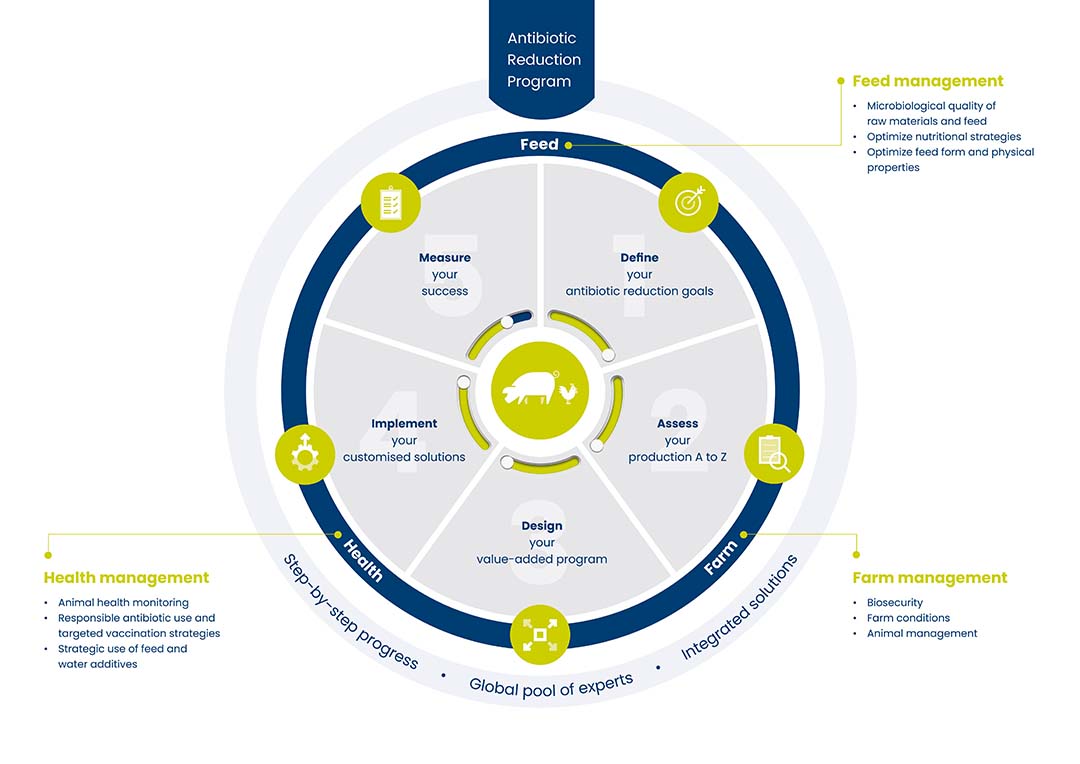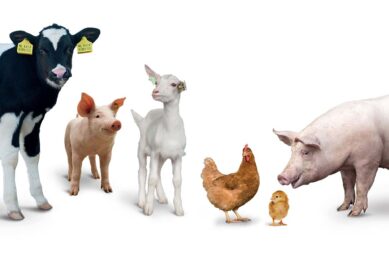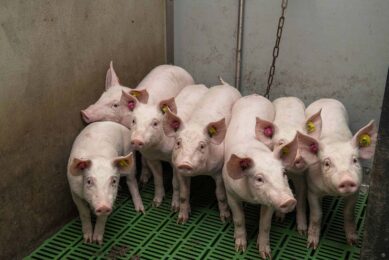Assessments are key to effectively reducing antibiotics

Complete comprehension and aligned perspectives on animal conditions, health challenges, and nutrition are essential to raise animals efficiently with less antibiotics. Cross-divisional teamwork, understanding, and aligning on feed, farm, and health management have been proven in the field to be very efficient to effectively reduce antibiotics.
ANTIBIOTIC REDUCTION SPECIAL 2023 – read all articles
Reducing the risk for antimicrobial resistance (AMR) is an urgent priority as producers around the globe strive to feed a growing population in a more sustainable way and safeguard the animal protein industry. A recent World Economic Forum report estimates that if the current trend in antibiotic use proceeds, AMR could increase mortality rates by 1%, an equivalent loss of US$13 billion in livestock value, with the biggest impact in low- and low-middle-income countries. The decrease in livestock production due to AMR is not only because of more untreatable diseases, but also due to the ‘fear factor’ in cases of disease outbreaks, with bans on imports.
A sound antibiotic reduction programme relies on a 5-step approach to drive a continuous cycle of improvement and make the reduction effort easier to manage. This step-by-step approach applied worldwide is essential to keep the process manageable and to keep all the different stakeholders aligned and motivated to reach the objectives. In this article, we provide practical examples from broiler farms in Latin America and the Middle East to demonstrate the importance of the second step, the assessments. This step delves into how farm animals are managed and their current conditions. It also explores their nutrient intake and utilisation, growth efficiency, health challenges, antibiotic usage, and health monitoring. While we’re describing broiler cases as examples, the principles discussed are equally important to other species, such as piglets.

Experiences of on-field thorough assessments
FEED ASSESSMENT: Pellet quality: Good pellet quality ensures nutrients are uniformly distributed to all animals. The ‘pellet durability index’ (PDI) indicates a standardised measure of a pellet’s ability to withstand degradation during transportation to and on the farm. Other parameters to assess durability include the percentage of fines and pellet hardness. On several assessments, PDIs have ranged from 60% to 70%, indicating that 40% to 30% of the feed could end up delivered as ‘fines’ to animals. Fines lead to a higher segregation of nutrients and usually contain concentrated levels of proteins and minerals, leading to poor gut health, other health problems, and unnecessary antibiotic use.
What are good pellet metrics? Aim for a minimum PDI of 90% with a pellet hardness of no more than 4. Implementing a moisture management programme, including Selko Fysal Flow, improved a customer’s PDI to 92% with a pellet hardness of 2 kg/cm2. These metrics facilitate easy feed intake and help evenly allocate nutrient distribution to all animals, promoting overall health and potentially reducing the need for antibiotics. As part of an integrated approach, this effort helped a customer achieve a 72% lower antibiotic usage.
FARM ASSESSMENT: Lighting: Dark housing conditions can lead to inadequate feed intake, evident in the increased occurrence of yolk sac residues. Without sufficient light, birds are not stimulated to eat or don’t easily find the feed. Adequate feed intake is crucial for birds to fully utilise yolk nutrients that promote healthy gastrointestinal development and enhance resilience. Light intensity should be regularly measured during the first week, with a minimum lux level of 30.
HEALTH ASSESSMENT: Viral Challenges: While the effects of intestinal viruses on gut health aren’t always well-defined, numerous viruses can have an immunosuppressive effect, which can affect gut health or trigger secondary bacterial infections. As bacterial infections often occur as secondary issues, it is crucial to assess the viral burden on birds. This assessment can be carried out using FTA cards, which enable the safe shipment of biological samples for PCR analyses, as they effectively inactivate bacteria and viruses while preserving their DNA and RNA.
On a broiler farm, trachea and cloaca samples were collected on FTA cards for a 10-variant Infectious Bronchitis Virus (IBV) qPCR analysis. Results showed a heavy field infection with a specific strain of infectious bronchitis, prompting the recommendation of an on-farm booster vaccination with this strain at day 14. This approach aims to reduce the need for antibiotics to address respiratory issues while supporting overall health and performance. Furthermore, PCR analysis conducted on bursa samples preserved on the FTA cards indicated a Gumboro (IBDV) infection. Compromising broilers’ immunity, Gumboro frequently triggers bacterial infections, leading to avoidable antibiotic use and poor performance. Serological testing will be carried out in subsequent flocks to confirm if the infection originated in the field. Vaccination schedules can be adjusted based on findings, and nutritional solutions such as Selko Presan-FY can help promote gut health and, consequently, enhance the immune response.
As part of a 5-step strategy, assessment is essential for producers to efficiently make the switch away from antibiotics.
Learn more about the Antibiotic Reduction Programme from Trouw Nutrition






